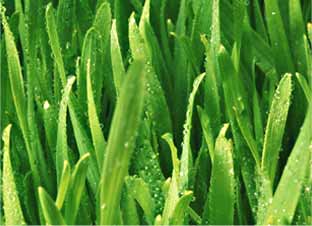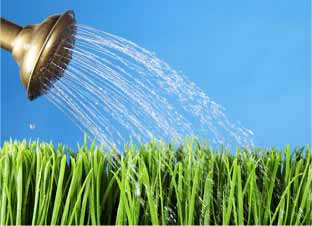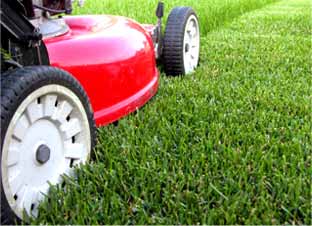Lawn Scarification
Scarifying the lawn whether it be for moss or thatch is in the long term an extremely beneficial procedure. Thatch is the organic material which develops between the green leaves of the grass and the soil surface. A small amount of thatch can be useful to a lawn as it helps to preserve moisture and a nice soft feel. Thatch is made up of dead dying and decaying material from the grass as well as outside sources such as moss and leaves. In a healthy growing environment this thatch layer should remain constant if this thatch is left unchecked and increases it will prevent the needed water and nutrients reaching the grass roots. Thatch provides a breeding ground for unfriendly bacteria and fungi that are likely to cause disease. Poor rooting turf is more susceptible to drought and increased incidence of mower scalp. Scarification will remove much thatch and allows the grass to regenerate. We only use the best powerful machines on the market, however scarification should not be confused with lawn raking (using a small DIY electric spring bladed machine can cause more damage than good tearing the grass and removing little thatch build up for the damage they cause).
Lawn Aeration
All life, needs air just as it needs water. For plants, air is just as important around the roots as it is around the leaves and this is no different for your lawn. Next to lawn mowing and fertilising, aeration is the next most important thing to do for your lawn. Thatch is one main symptom of poor air infiltration and compaction in a lawn. Compacted soil holds little air or water, this means that as new grass shoots develop and grow, the older ones die and just build up in a layer underneath causing a spongy thatch layer. "Once developed beyond ½", this thatch layer acts as a barrier to water, air and nutrient penetration further exacerbating the lawn problems. To combat this we use a powered hollow tine aerator that pushes tine bars into the soil and removes hundreds of cores onto the surface of your lawn, then the cores are swept off. Hollow time should only be done when good recovery can be achieved. The suggested time to hollow tine is at the end of August through to the middle of October as the target months because the weather will be getting wetter rather than drier. This will improve drainage and increase soil temperatures.
Watering the Lawn
Water when the lawn tells you to. The signs to look for when the lawn is starting to gasp a little are; a change in colour of the lawn as it often takes on a bluey tinge as moisture levels become low and the lawn then turns brown. Water deeply each time you water. You must avoid having wet grass at night as this promotes disease, therefore water before the heat of the day so that the lawn has time to dry before nightfall.
Lawn Mowing
Cutting the lawn is the most time consuming part of lawn care. It seems sensible to do it correctly. Cutting grass short reduces rooting depth which in turn reduces the water the plant gets, this can cause stress, weakness and possible death of grasses during the dry spells. Mowing once a week will produce a much denser turf than if you mow every 2 weeks. Never remove more than one third of the grass bade on any one occasion. If your lawn mower is set for 1" cut which is an ideal mowing height you must mow at or before the grass gets to 1½" whether that's 4 days or 8 days before cut. In very dry weather raise the cut up one setting. Remember mowing height is a compromise between getting the superb looking lawn you want, allowing the grass enough leaf to be healthy and look greener.







